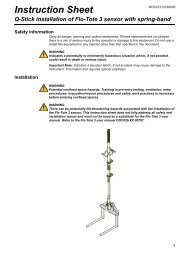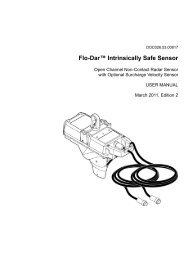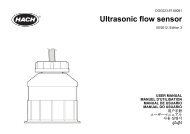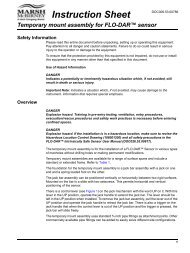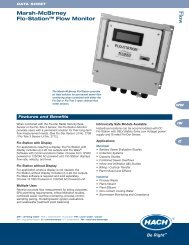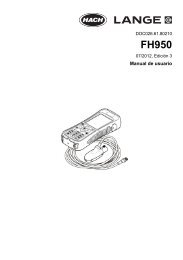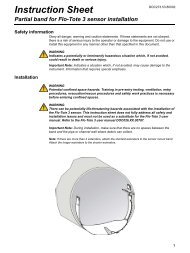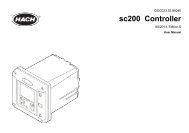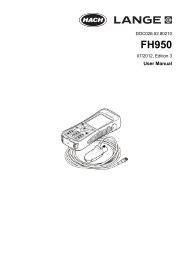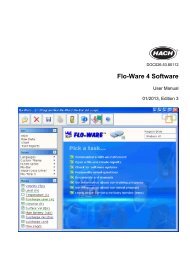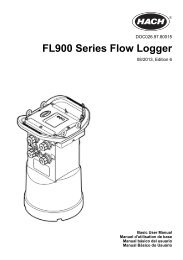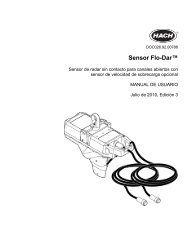Create successful ePaper yourself
Turn your PDF publications into a flip-book with our unique Google optimized e-Paper software.
SpecificationsSurcharge conditions depth/velocityDepth (standard with <strong>Flo</strong>-Dar <strong>Sensor</strong>)Velocity (with optional surchargevelocity sensor)Surcharge depth supplied by <strong>Flo</strong>-Dar sensorMethod: ElectromagneticRange: ±4.8 m/s (±16 ft/s)Accuracy: ±0.15 ft/s or 4% of reading, whichever is greaterZero stability: >±0.05 ft/sFCC and Industry Canada StatementsCanadian Interference-causing Equipment Regulation, IECS-003, Class AThis Class A digital apparatus meets all requirements of the CanadianInterference-causing Equipment Regulations.Cet appareil numerique de la classe A respecte toutes les exigences du Pegulement surle materiel brouilleur du CanadaFCC PART 15, CLASS "A" LimitsThe device complies with Part 15 of the FCC Rules. Operation is subject to the followingtwo conditions:1. This device may not cause harmful interference, and2. This device must accept any interference received, including interference that maycause undesired operation.Changes or modifications to this unit not expressly approved by the party responsible forcompliance could void the user’s authority to operate the equipment.This equipment has been tested and found to comply with the limits for a Class A digitaldevice, pursuant to Part 15 of the FCC Rules. These limits are designated to providereasonable protection against harmful interference when the equipment is operated in acommercial environment. This equipment generates, uses, and can radiate radiofrequency energy and, if not installed and used in accordance with the instruction manual,may cause harmful interference to radio communications. Operation of this equipment ina residential area is likely to cause harmful interference, in which case the user will berequired to correct the interference at the user’s own expense. The following techniquesof reducing the interference problems are applied easily.1. Disconnect the equipment from it’s power source to verify that it is or is not thesource of the interference.2. If the equipment is connected into the same outlet as the device with which it isinterfering, try another outlet.3. Move the equipment away from the device receiving the interference.4. Reposition the receiving antenna for the device receiving the interference.5. Try combinations of the above.4



